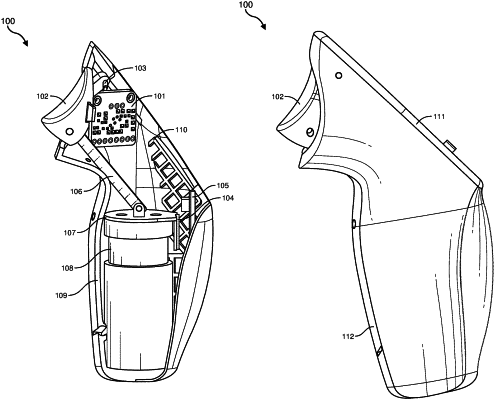| CPC G06F 3/016 (2013.01) [A63F 13/285 (2014.09); G06F 3/0338 (2013.01); B06B 1/045 (2013.01); G06F 3/012 (2013.01); G06F 2203/015 (2013.01); H02K 33/18 (2013.01); H04R 9/06 (2013.01); H04R 2499/11 (2013.01)] | 20 Claims |

|
1. A system comprising:
a substructure configured to support one or more components;
an actuator configured to provide substantially linear motion along a specified axis in response to an electrical input;
at least one input component hingedly coupled to the substructure, the input component being configured to receive input from a user; and
a mechanical linkage coupled to the input component and to at least a portion of the actuator, the mechanical linkage being configured to translate the substantially linear motion provided by the actuator to a rotary force applied to the input component via the mechanical linkage,
wherein the actuator is configured to vary the amount of linear motion applied to the input component based on a detected amount of input force applied to the input component and based on a specified input force profile, wherein the input force profile causes specific amounts of linear motion to be applied by the actuator at a variable rate along a force curve associated with a simulated experience, wherein the force curve specifies an initial linear motion value, specifies at least one defined increase or decrease in variable rotational resistance at a second, later time in the force curve, adjusts the linear motion value according to the force curve of the simulated experience and, upon termination of the simulated experience, returns the linear motion value to the initial value.
|